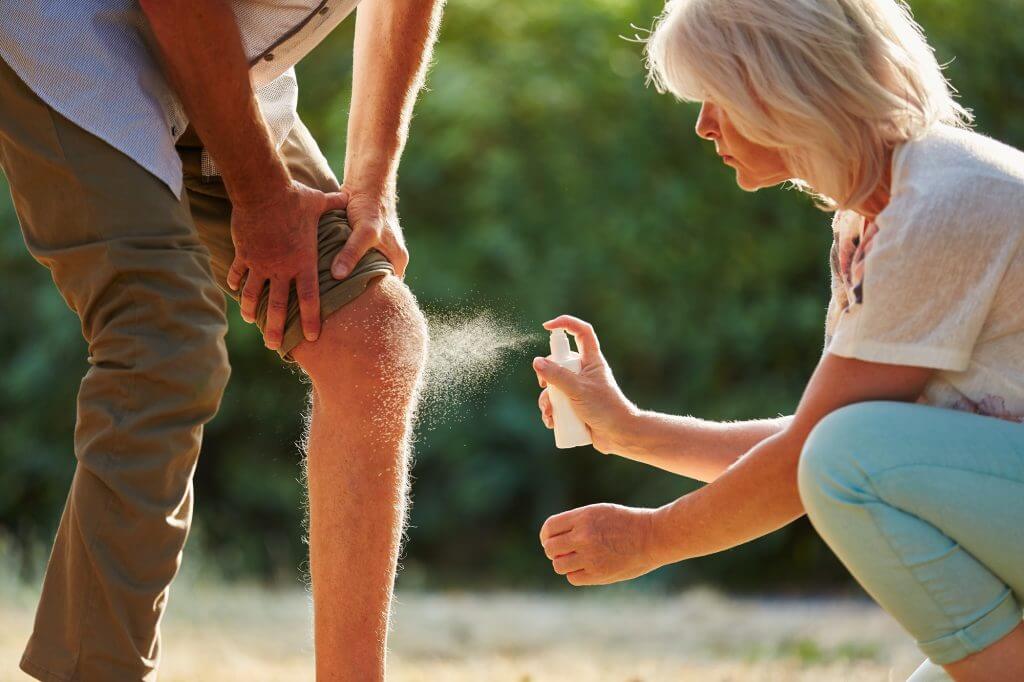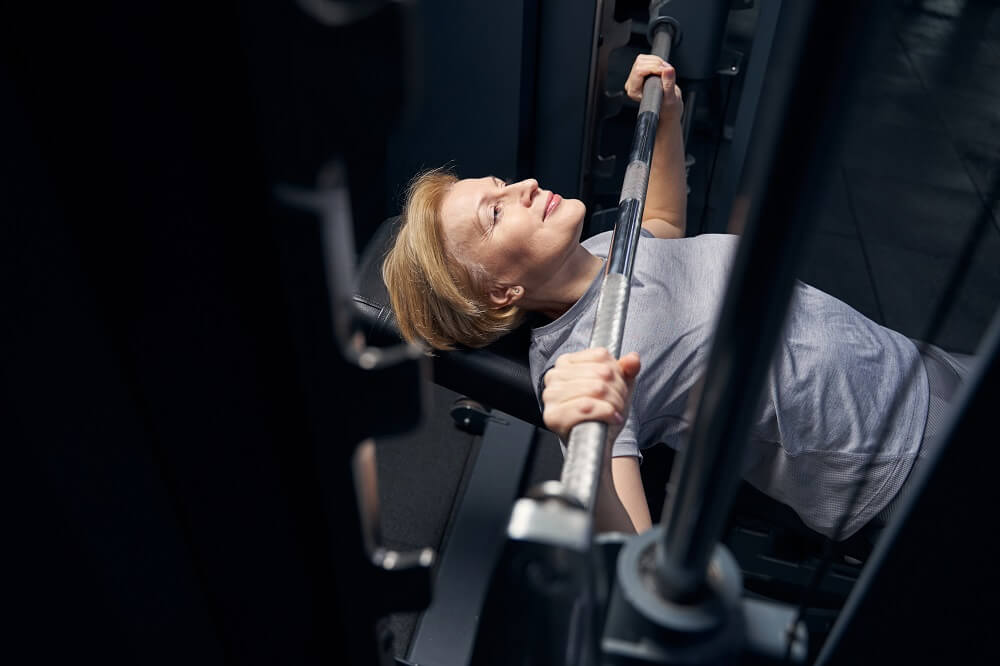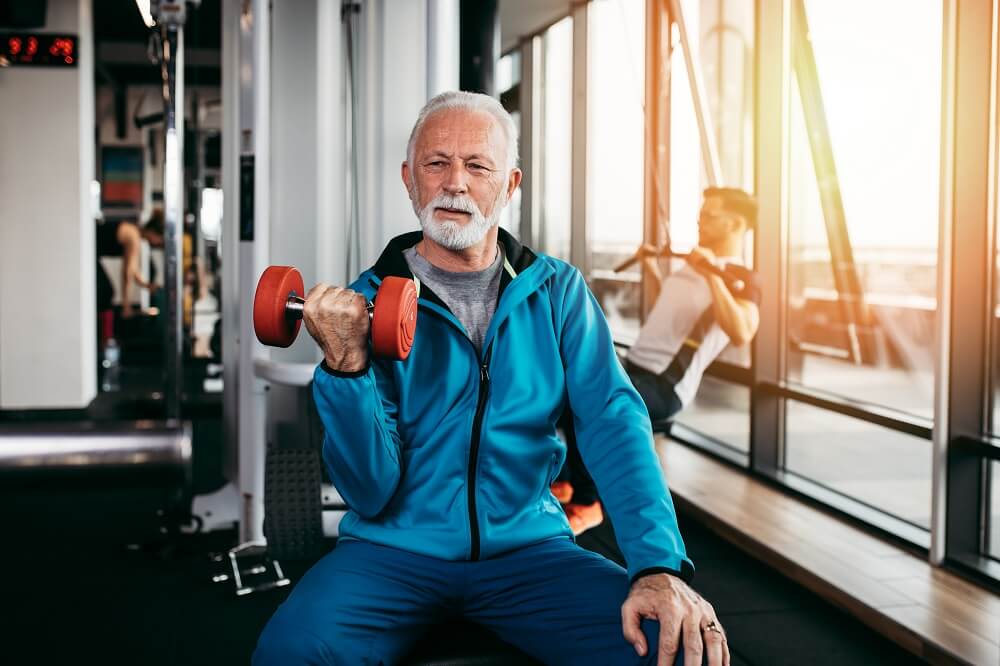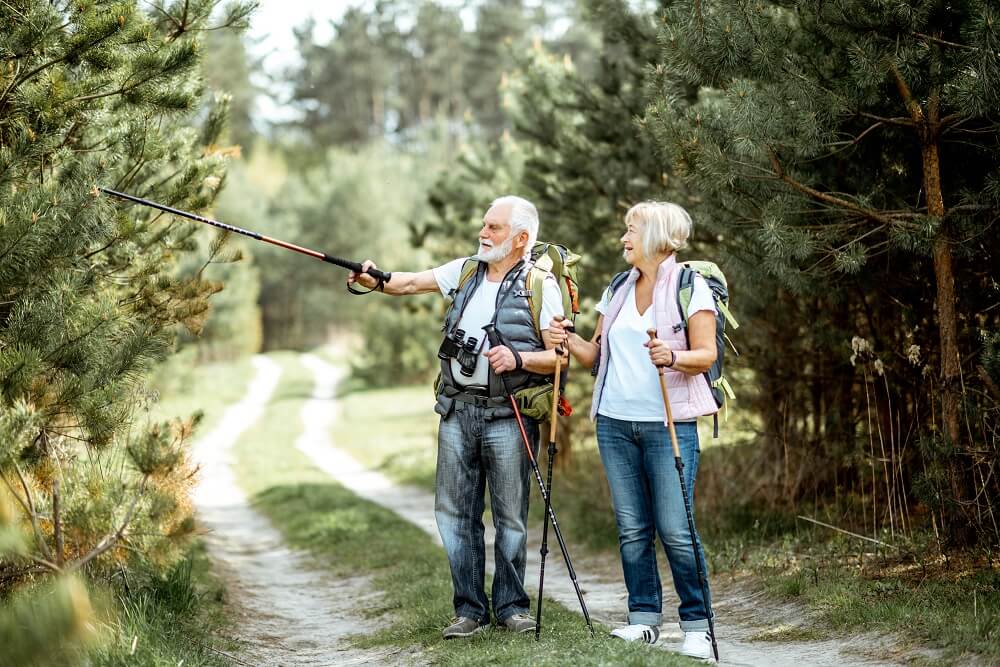
Fall Prevention for Older Adults: Why They Happen & How to Prevent Them


We’ve all taken a tumble before. Most of the time, the worst injury we sustain is a bruised ego. But as our years progress, falling can become less of an embarrassment and more of an emergency situation.
Many falls result in fractures, which may result in lengthy hospital stays, unwanted medical expenses, and even disability or loss of mobility or independence altogether.
Studies have found:
- An American senior visits an emergency room with a fall-related injury every 11 seconds.
- “Falls are a strong predictor of placement in a skilled-nursing facility.”
The thought of a fall can be unsettling as we get older. While it’s a natural concern, the good news is that falls don’t need to be an inevitable part of aging. There are several proven ways to prevent falls in the elderly, allowing us and our loved ones to stay active and independent for much longer.
Who Falls and When?
Although older adults with comorbid health conditions are more likely to suffer a fall, even healthy older adults are at a greater risk of falling as compared to their younger peers.
Every year, over 1 in every 4 older adults (aged 65 and older) experiences a fall.
“Most injuries in the elderly are the result of falls,” according to the Institute of Medicine. “Fractures of the hip, forearm, humerus, and pelvis usually result from the combined effect of falls and osteoporosis.”
Here are more stats about falls:
- Approximately 800,000 adults are hospitalized every year due to injuries resulting from falls.
- Roughly 20% of falls among older adults result in serious injury (e.g., fracture or head injury).
- More than 95% of hip fractures are caused by falling.
- The risk is 4.5 times greater for those who experienced a severe TBI. Falls are the primary reason seniors are one of the highest-risk groups for concussions and traumatic brain injuries. Research shows even a single head injury can lead to dementia later in life.
- More women fall than men.
- Among older adults who fall, less than half inform their physician.
- Hip fractures are predictive of admission to nursing homes and care facilities.
- Falls are the leading cause of “fatal and nonfatal injuries among older adults.”
- A single fall doubles the chance of a subsequent fall.
The fear that sticks around after a fall can be a thief of joy. Even for those who fully recover from a fall, the fear of a trip to the hospital can change their activity levels. They may spend more time at home, isolating themselves and limiting social interactions.
Moreover, the journey doesn’t end at discharge. Many people experience post-hospital syndrome, facing a new set of challenges after leaving the hospital. The stress of hospitalization can leave you feeling fatigued, weaker than before, and with nutritional deficiencies. This can make it difficult to get back on your feet, impacting not just you but also your loved ones who want to support you.
Why Do Seniors Fall More?

A number of factors make seniors more susceptible to falling. Let’s take a look at some of the most common.
Physiological Factors
Significant fall risk comes from physiological factors such as the loss of muscle mass as we age, called sarcopenia, can cause weakness, fatigue, and difficulty standing and walking.
Sarcopenia not only makes falls more likely, but the loss of muscle mass also makes it more difficult for us to bounce back after a fall.
Hearing, Balance, and Vision Changes
Our hearing and balance systems are closely connected and particularly sensitive to the reduced blood flow that is often a hallmark of aging.
Thus, poor balance can be caused by age-related conditions like cardiovascular disease, low blood pressure, neurological disorders, and diabetes. Similarly, vision problems, also common as we age, can negatively affect our perception as well as ability to see obstacles and lead to falls.
Cognitive Challenges
As we age, it’s natural for our bodies to change. Sometimes, these changes can affect our memory, thinking, and balance. This can make it a bit harder to stay steady on our feet, increasing the risk of falls.
Studies note, “Patients with cognitive impairment may experience up to 20 times more falls than asymptomatic older individuals.”
Side Effects of Prescription Medications
The average older adult takes four or more prescription drugs to manage age-related diseases.
Many medications can contribute to falling because they can make us less alert or slow our reaction times. These include anti-anxiety medications, allergy and sleep aids, tricyclic antidepressants, and prescription sleep drugs like Ambien.
Safety Hazards
Safety hazards like slippery floors, loose rugs, and poor lighting in our homes can also lead to falls.
In fact, the National Council on Aging notes 60% of falls happen in the home. Home-based accidents can be particularly dangerous for those who live alone.
What Increases Your Chance of Falling?
While the risk of falling increases with age, simply getting older isn’t generally the only cause of falls. Other factors that may increase the risk of falling include:
- Muscle weakness. Many older adults have lost some degree of muscle strength or tone, which can affect overall physical fitness.
- Balance and gait problems. People with balance issues or those who shuffle when they walk have proven to be at higher risk for falling.
- A drop in blood pressure when standing (postural orthostatic hypotension or POTS). The common “head rush” feeling when standing up too quickly after being seated or lying down can cause dizziness and even fainting, which can result in a fall.
- Confusion. Older adults (particularly those suffering from any form of cognitive decline) may experience confusion, such as waking up and not remembering where they are, that can lead to accidents.
- Bad footwear. Choosing quality shoes with good traction can go a long way towards a more secure footing.
- Medical conditions. Older adults are naturally more likely to have comorbid health conditions, from high blood pressure to diabetes to cancer; many of the symptoms (not to mention treatments) of these conditions can affect your balance, strength, or cognition, which could increase your risk of falling.
- Medications. Psychotropic medications, in particular, can often cause side effects such as dizziness or lightheadedness, which may affect balance and coordination.
- Impaired vision. Eye conditions that interfere with any aspect of vision can lead to tripping or falling.
- Environmental factors. While falls can happen rather spontaneously, more frequently, some kind of hazard acts as a precipitating factor—an icy sidewalk, furniture that’s slightly out of place, or someone leaving their shoes where you can trip over them are all more about your surroundings than they are about you.
Osteoporosis: Turning Falls into Fractures
One of the most important conditions related to falling and fractures is osteoporosis.
Fifty-four million Americans age 50 or over have (or are at risk for) osteoporosis, a bone disease that primarily decreases one’s bone mineral density (BMD). Osteoporosis makes bones less dense, more brittle, and therefore more prone to breaking. It causes two million fractures a year and costs the US over $19 billion in healthcare spending.
Having osteoporosis may not directly increase your risk of falling, but those who have the condition are more likely to suffer a fracture or other injury when falls do occur. It’s also a “largely preventable” condition.
Here are some general tips for good bone health:
- Stay physically active. In particular, weight-bearing exercise or strength training shows the most benefit for strengthening bones.
- Maintain a healthy diet. Calcium and vitamin D, along with a nutritious diet overall, are critical for bone health.
- Stop smoking and avoid excessive alcohol intake. Both of these have been shown to reduce bone density.
- Have your risk assessed. Screening for osteoporosis is possible. A simple screening by your doctor can show if you need a bone mineral density test. Increased screening, assessment, and treatment for osteoporosis, particularly for high-risk individuals, would prevent “6.1 million fractures over the next 22 years while reducing payer costs by $29 billion and societal costs by $55 billion.”
Although preventing or treating osteoporosis may not directly decrease the risk of falling, it may go a long way towards improving the outcome for those who do suffer a fall.

Fear of Falling Can Exacerbate the Problem
Given that falling and fractures can have a major impact on quality of life, it’s not surprising that many older adults experience a fear of falling. Unfortunately, this fear has been shown to lead to (among other things) self-imposed restriction of certain activities, which can itself lead to a decline in quality of life.
Any decrease in physical activity for older adults has the potential to kick off a vicious cycle: Restriction of activities may lead to a decrease in overall physical activity, which can increase the time spent sedentary. Both factors (less physical activity plus more sedentary activity) increase the risk for all-cause mortality in older adults.

Assessing the Risk of Falling
Over the last few decades, experts have come up with many ways to assess the risk of falling. This is a complicated process that can sometimes involve subjective judgments, such as a practitioner’s appraisal of a patient’s gait and walking speed as they walk from the waiting room to the exam room, for example.
Doctors may screen all older adults for fall risk by assessing just these three factors:
- Falls and/or fall-related injuries sustained in the previous year
- A fear of falling
- A feeling of unsteadiness when walking or standing
Although many factors make assessing fall risk complex for practitioners, these three factors were found to be the most predictive of whether an individual will fall.
If one of the above three factors is recognized, the doctor should perform a more thorough assessment involving objective measures of balance, walking speed, and muscle strength.
Those who have suffered recurrent falls or a hip fracture, as well as anyone with a balance, muscle strength, or walking/gait disorder, are automatically considered high-risk for a fall.
How to Prevent Falls in the Elderly
If you want to stay independent as long as possible, it’s worth taking steps to mitigate your risk of falling and injury. Here are some things that can help.
1. Staying Physically Active
Americans overall are trending towards a more sedentary lifestyle. Older adults are the most sedentary group of individuals. Specifically, this group needs fall prevention exercise programs that target the following.
Strength Training
Weight-bearing exercise can improve bone mass and reduce the effects of osteoporosis. Not only does strength training fortify your bones, but it also builds muscle mass—something that older adults tend to have less of.
Between the ages of 50 and 70, our muscle mass decreases by about 8% per decade. A strength or resistance workout three times a week can significantly improve endurance, power, and bone density while also reducing frailty, chronic diseases, and fall risk. Using evidence-based interventions, balance can be improved significantly in as little as 8 weeks.
We recommend doing 2-3 days of balance and strength training per week. Rest assured, you don’t need to spend countless hours at the gym. As little as 20 minutes goes a long way.
Please check with your doctor before starting a new exercise program, but the following is generally recommended for helping prevent falls in elderly people:
- Toe stands
- Knee curls
- Leg extensions
- Standing heel raises
- Lunges
- Side stepping
- Backwards walking
Balance Training
Gentle yoga and tai chi are good examples of exercise regimes that can improve your balance, which reduces your risk of falling.
Flexibility
Increasing your range of motion can help aid balance and coordination.

2. Receiving Routine Medical Care
Practitioners should screen all adults over the age of 65 for both osteoporosis risk and fall risk.
In particular:
- Be honest with your doctor about any falls or injuries sustained from falling; your risk for falling and subsequent injury increases substantially after each fall.
- Review your medications with a doctor or pharmacist. Knowing the potential side effects of the drugs you take can help you evaluate your fall risk. While speaking with your doctor, express any concerns you may have about your balance.
- Have your hearing checked annually. The fall risk for older adults with hearing loss is 2.4 times higher than for those with normal hearing; however, consistent hearing aid use can lower your risk.
- Get your vision checked as well. People with low vision have double the risk of falling. Update your glasses prescription to ensure you can see clearly. Remember that it can take several days to adjust to new glasses, and be especially cautious during this period.
- Keep up with preventative care visits, and stay on top of other health conditions; comorbid disorders increase the risk of falling, particularly ones that affect cognition, balance, or muscle strength.
3. Taking an Environmental Check
Intrinsic risk factors, such as one’s general state of health, aren’t typically easily modifiable. However, falling also can involve extrinsic risk factors, which are changeable.
If you’re at risk of falling, you can mitigate risk by doing the following:
- Declutter your living areas. This can be a boon to your physical and mental health while reducing the risk of tripping on things.
- Check for tripping hazards such as cords, rugs, loose floorboards, etc., especially in high-traffic areas.
- Reorganize if needed so that commonly used goods are well within easy reach, and make sure heavy or awkward belongings aren’t stored on high shelves where they could fall.
4. Using Support Devices

Being honest with yourself about the support and accommodations you need can keep you healthy and independent longer.
- Use a cane, walker, or hiking poles if you need help walking or feel unsteady at all.
- Consider modifying your residence to include safety accommodations like grab bars in the bathroom/shower, raised toilet seats, or even a step-in bathtub.
The Bottom Line

Good self-care, staying active, and being open and honest with yourself and your doctor can go a long way toward preventing slips, trips, and falls.
For even more ways to improve your healthspan, learn more about reversing the biology of aging. Transform the way you age by leveraging the latest innovation in healthcare—a medical protocol only offered at Aviv Clinics.
Reverse the Biology of Aging>>




